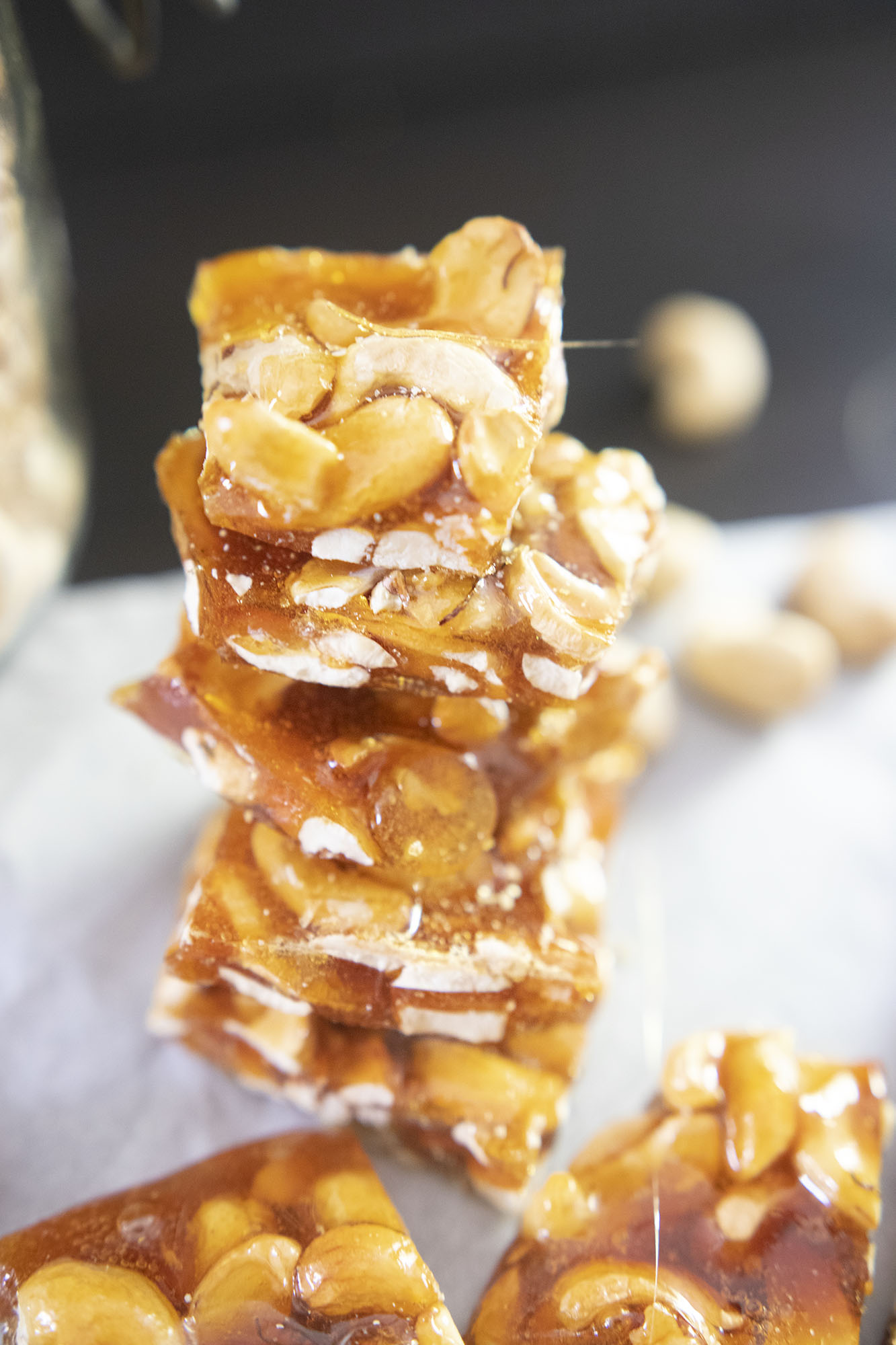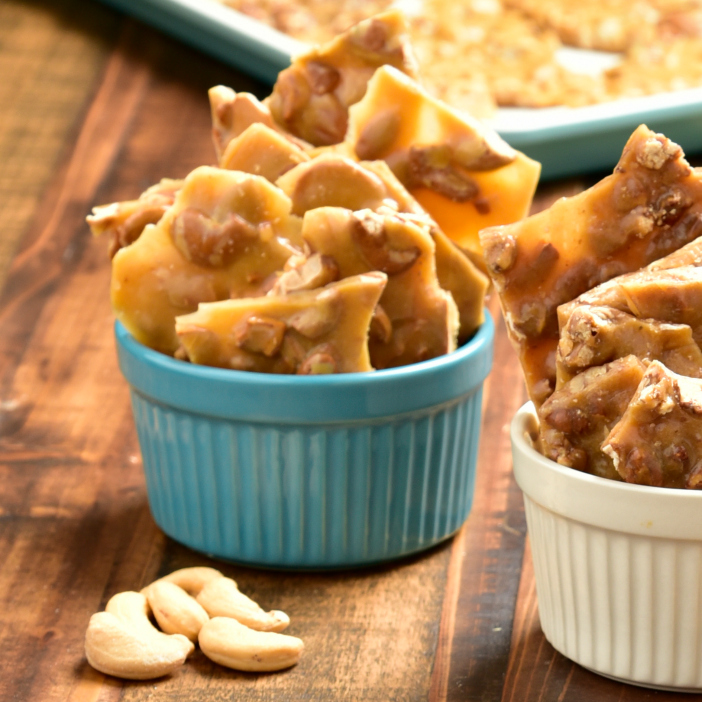
If you’re truly a peanut brittle fanatic, mark your calendar for January 26, which is National Peanut Brittle Day.

It’s known as pasteli in Greece, croquant in France and gachak or chikki in India. While the peanut version is most popular in North American, the combination of sweet candy and salty nuts is enjoyed around the world. Whether or not you believe this story, you’ll have to admit that, accident or not, brittle is a delicious confection. Instead of stringy, chewy taffy, she ended up with crunchy, nutty brittle, and she decided to replicate her “mistake” as her own version of a peanut brittle recipe. Store in an airtight container or enjoy immediately.Was the invention of peanut brittle just one of those happy kitchen accidents? We’ll probably never know, but some food historians are partial to the story that it was invented in 1890 by a southern woman who was trying to make peanut taffy, but mistakenly added baking soda instead of cream of tartar to her recipe.Cover the brittle with a sheet of parchment paper (to prevent flyaways) and whack several times with a rolling pin mallet until it is broken into pieces of desirable size. Once the peanut brittle is cooled, remove the brittle from the sheet tray.Remove from the heat stir in baking soda. Add nuts cook and stir until candy thermometer reads 295°. Cook and stir until a candy thermometer reads 280° (soft-crack stage). Allow to cool completely for at least 4 hours, up to overnight. Reduce heat cut remaining butter into cubes and carefully stir into syrup. Pour the mixture into the prepared sheet tray and spread out with a spatula to ensure it is even. Add the salt, baking soda and vanilla and stir until thoroughly combined. It will sputter and foam so do not be alarmed. Remove the pot from the heat and stir in the butter.DO NOT stir the mixture at all once it has come to a boil. Once the mixture has come to a boil, increase the heat to medium and stop stirring and allow to boil until the sugar mixture reaches a deep amber colour and wisps of smoke appear. Wash down the sides of the pot with a pastry brush dipped in water to prevent any sugar from crystalizing.Set over low heat and, stirring constantly, allow the sugar to completely dissolve (see note). Add sugar to a small saucepan and pour over 120ml (1/2 cup) of cool water. Line a rimmed baking sheet with parchment paper.

Using a pastry brush (I find that a natural bristle brush works better for this, but a silicone brush will also work if that’s all you have), brush down the sides of the pan with a bit of water to keep any stray crystals from forming. Once the sugar syrup is boiling, DO NOT stir it. Once the sugar has dissolved, bring the mixture up to a boil. Keep in mind that this can take a bit of time, but patience is really key when making any kind of caramel and it will pay off, I promise! If you’re worried that your mixture is coming to a boil before the sugar has dissolved, take it off the heat and keep stirring until you can get the sugar dissolved. If you have undissolved sugar crystals in your mixture after it starts to boil, it will almost certainly seize and crystallise and there is no turning back. It’s the same thing you have to do in my marshmallow recipe, just with later caramelisation. This is by far the most important step in this peanut brittle recipe. Set it over the lowest heat possible and stir continuously until the sugar is COMPLETELY dissolved, but has not come to a boil yet. Now, add your sugar and a bit of water to a saucepan.

If you want some extra insurance, brush it down with some melted butter or non-stick cooking spray to make sure you can remove the peanut brittle once it has set.

Simply line a half sheet tray (a rimmed baking sheet) with parchment paper. So to begin this peanut brittle without corn syrup recipe, you need to prep your pan. Quickly spread the toffee and the cashews out so the cashews do not stack up on each other-you want cashews all through the toffee. Ingredients for this peanut brittle recipe As soon as the Cashew Brittle reaches the 280-285 degrees, quickly remove the pan from the heat and pour mixture onto the prepared baking sheet (with sides).


 0 kommentar(er)
0 kommentar(er)
